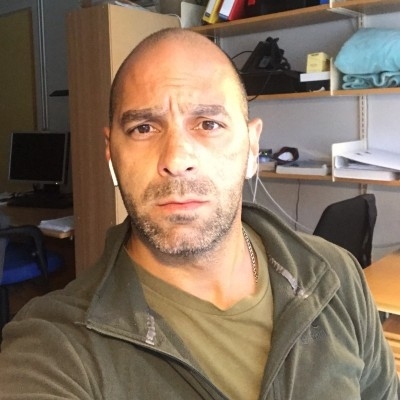Introduction
I obtained my BSc in biological and earth sciences at the Université Saint Joseph in Beirut in 2006. Following a brief spell at the École Normale Supérieure in Paris, I completed my MSc in applied physiology at the University of Oxford followed by an MPhil in bioenergetics at the University of Cambridge. In 2009, I was awarded a Clarendon scholarship to pursue my DPhil studies in clinical neurology at the University of Oxford. Since 2014, I have held various postdoctoral appointments at Bristol and Oxford. I joined Queen’s in 2017 as lecturer of neuroscience.
Teaching
I have formal pedagogic training (PGCert) and I am a Fellow of the Higher Education Academy (FHEA). I teach the neuroscience syllabus to second-year undergraduates reading medicine and first-year undergraduates reading biomedical science. I also provide tutorials for visiting students in research design and analysis, statistics, comparative physiology, and neurobiology. I supervise FHS medical students who take an interest in submitting extended essays on microglia, neuroimmunology, neurodevelopment, neurodevelopmental disorders, and neurodegenerative disease as part of the FHS medical sciences’ examination.
Research
I am senior research fellow at the Department of Neuropathology based in the Parkinson’s Neuropathology group and a research affiliate of the paediatric neuro-oncology group at the Karolinska Institutet. My research is focused on translational human neuropathology in neurodegenerative and neurodevelopmental disease. Importantly, I am interested in how microglia, the brain’s resident macrophages, participate in mechanisms of health, injury, and repair. I use neuroanatomical analyses and computational methods including machine learning and spatial transcriptomics to investigate molecular disease signatures. I collaborate with various groups in the UK and abroad including the Blomgren lab (Karolinska), the Sundström lab (Karolinska), the Holcman lab (Ecole Normale Supérieure), the Long lab (KCL), the Vernon lab (KCL), the Coutinho lab (Coimbra), the Krsnik lab (Zagreb) and the Tremblay lab (Victoria).
Publications
- Matuleviciute R, Akinluyi ET, Muntslag TAO, Dewing JM, Long KR, Vernon AC, Tremblay ME, Menassa DA. Microglial contribution to the pathology of neurodevelopmental disorders in humans. Acta Neuropathol. 2023 Sep 1. doi: 10.1007/s00401-023-02629-2.
- Barry-Carroll L, Greulich P, Marshall AR, Riecken K, Fehse B, Askew KE, Li K, Garaschuk O, Menassa DA, Gomez-Nicola D. Microglia colonize the developing brain by clonal expansion of highly proliferative progenitors, following allometric scaling. Cell Rep. 2023 May 30;42(5):112425. doi: 10.1016/j.celrep.2023.112425. Epub 2023 Apr 25.
- Menassa DA, Muntslag TAO, Martin-Estebané M, Barry-Carroll L, Chapman MA, Adorjan I, Tyler T, Turnbull B, Rose-Zerilli MJJ, Nicoll JAR, Krsnik Z, Kostovic I, Gomez-Nicola D. The spatiotemporal dynamics of microglia across the human lifespan. Dev Cell. 2022 Aug 9: S1534-5807(22)00546-9. doi: 10.1016/j.devcel.2022.07.015. Epub ahead of print.
- Hu Y, Fryatt GL, Ghorbani M, Obst J, Menassa DA, Martin-Estebane M, Muntslag TAO, Olmos-Alonso A, Guerrero-Carrasco M, Thomas D, Cragg MS, Gomez-Nicola D. Replicative senescence dictates the emergence of disease-associated microglia and contributes to Aβ pathology. Cell Rep. 2021 Jun 8;35(10):109228. doi: 10.1016/j.celrep.2021.109228.
- Gundersen JK, Chakkarapani E, Jary S, Menassa DA, Scull-Brown E, Frymoyer A, Walløe L, Thoresen M. Morphine and fentanyl exposure during therapeutic hypothermia does not impair neurodevelopment. The Lancet EClinicalMedicine. 2021 Jun 5;36:100892. doi: 10.1016/j.eclinm.2021.100892.
- Moreira LM, Takawale A, Hulsurkar M, Menassa DA, Antanaviciute A, Lahiri SK, Mehta N, Evans N, Psarros C, Robinson P, Sparrow AJ, Gillis MA, Ashley N, Naud P, Barallobre-Barreiro J, Theofilatos K, Lee A, Norris M, Clarke MV, Russell PK, Casadei B, Bhattacharya S, Zajac JD, Davey RA, Sirois M, Mead A, Simmons A, Mayr M, Sayeed R, Krasopoulos G, Redwood C, Channon KM, Tardif JC, Wehrens XHT, Nattel S, Reilly S. Paracrine signalling by cardiac calcitonin controls atrial fibrogenesis and arrhythmia. Nature. 2020 Nov 4. doi: 10.1038/s41586-020-2890-8. Epub ahead of print.
- Carroll L, Braeutigam S, Dawes JM, Krsnik Z, Kostovic I, Coutinho E, Dewing JM, Horton CA, Gomez-Nicola D, Menassa DA. Autism Spectrum Disorders: Multiple Routes to, and Multiple Consequences of, Abnormal Synaptic Function and Connectivity. Neuroscientist. 2020 May 22:1073858420921378. doi: 10.1177/1073858420921378. Epub ahead of print.
- Menassa DA, Gomez-Nicola D. Microglial Dynamics During Human Brain Development. Front Immunol. 2018 May 24;9:1014. doi: 10.3389/fimmu.2018.01014. eCollection 2018. Review.
- J Dawes JM, Weir G, Middleton SJ, Patel R, Chisholm K, Pettingill P, Peck LJ, Sheridan J, Shakir A, Jacobson L, Gutierrez-Mecinas M, Galino J, Walcher J, Kuhnemund J, Kuehn H, Sanna M, Lang B, Clark AJ, Themistocleous A, Iwagaki N, West SJ, Werynksa K, Carroll L, Trendafilova T, Menassa DA, Giannoccaro MP, Coutinho E, Cervellini I, Tewari D, Buckley C, Leite M, Wildner H, Zeilhofer HU, Peles E, Todd AJ, McMahon SB, Dickenson LH, Lewin G, Vincent A, Bennett DLH (2018). Immune or genetic mediated disruption of CASPR2 causes pain hypersensitivity due to enhanced primary afferent excitability. Neuron, e1-e10. doi: 10.1016/j.neuron.2018.01.033.
- Menassa DA, Braeutigam S, Bailey A, Falter-Wagner CM. Frontal evoked γ-activity modulates behavioural performance in Autism Spectrum Disorders in a perceptual simultaneity task. Neurosci Lett. 2018 Feb 5; 665:86-91. doi: 10.1016/j.neulet.2017.11.045. Epub 2017 Nov 27.
- Coutinho E, Menassa DA, Jacobson L, West S, Domingos J, Moloney T, Pedersen MG, Benros, ME, Lang B, Bennett DLH, Harrison PJ, Mortensen PB, Nørgaard-Pedersen B, Bannerman D, Vincent A (2017). Maternal CASPR2 antibodies and neurodevelopmental disorders in the offspring: epidemiological findings and an animal model. The Lancet, 389(S1), S18. doi: 10.1016/S0140-6736(17)30414-2.
